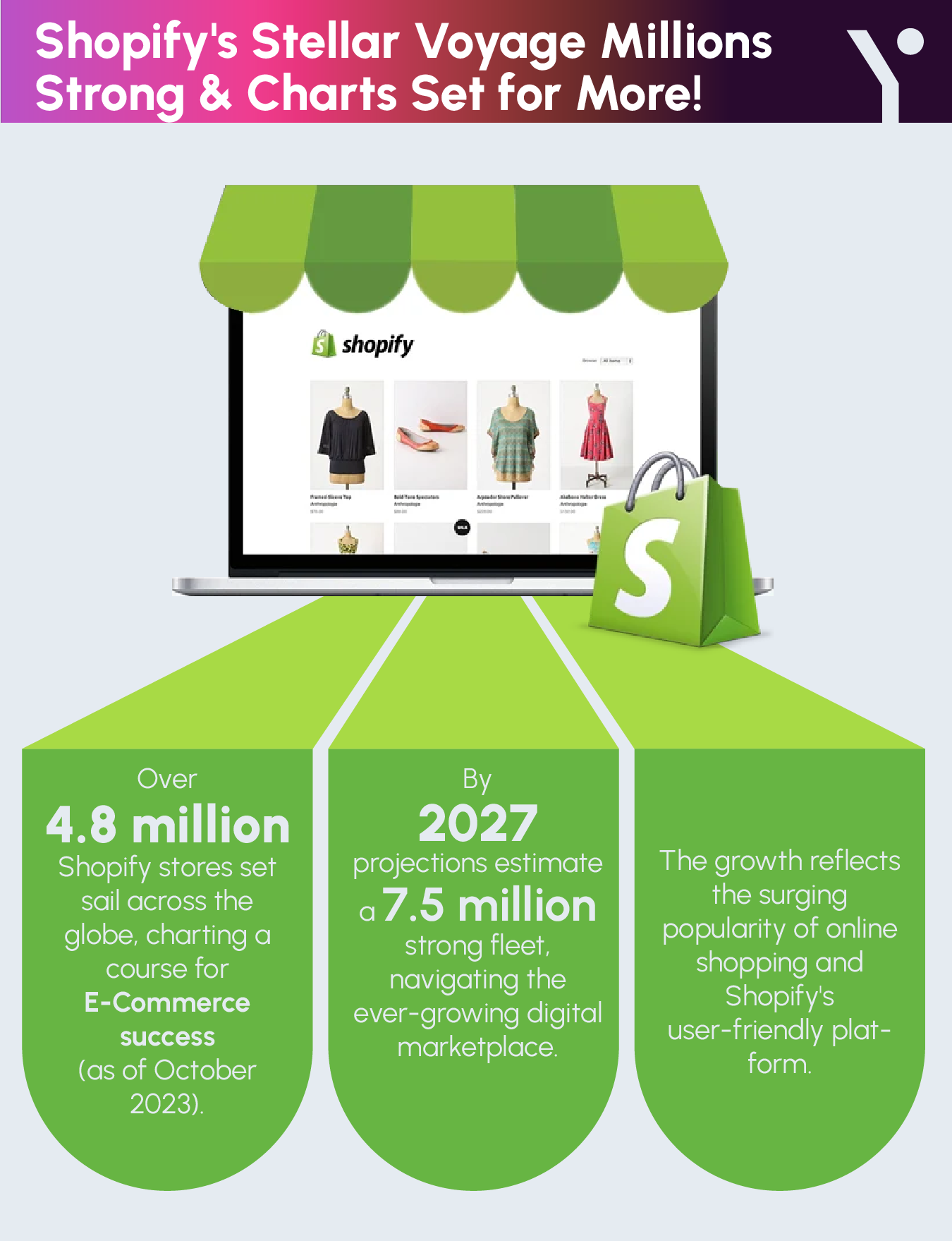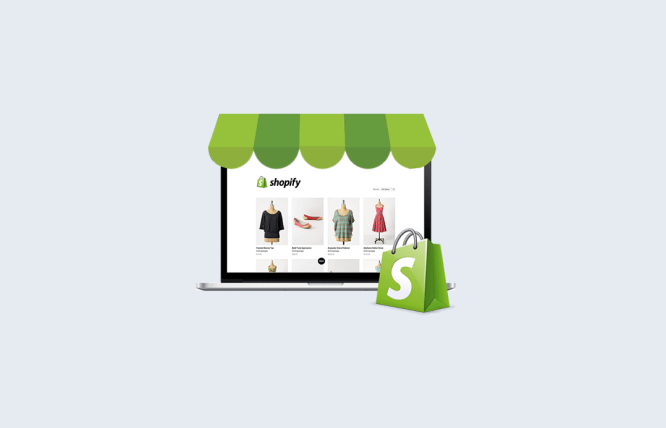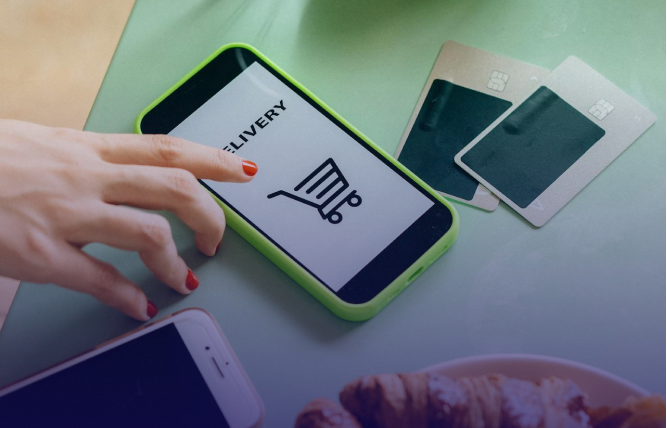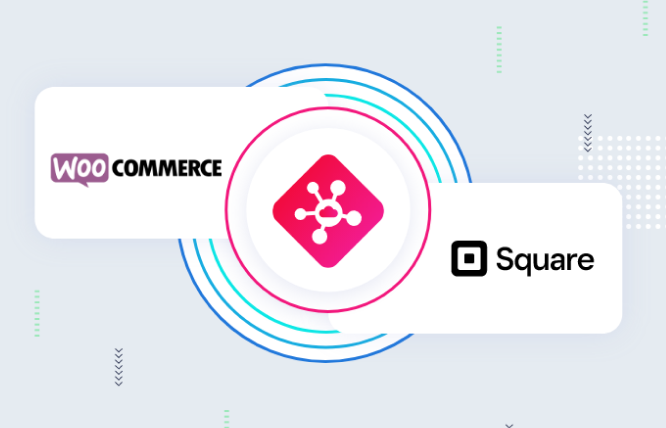Introduction
The blog “How to Start a Shopify Store: A Complete Guide” offers comprehensive steps for launching a successful online store. From strategies, tips, and initial setup, all the way to marketing, it covers everything entrepreneurs need to know. With clear explanations and actionable tips, it’s a valuable resource for anyone venturing into e-commerce.
Starting a Shopify store sounds good and exciting, but before you dive in headfirst, you need to lay the groundwork for success.
Launching an online store takes effort, but it’s worth it! In this blog, we’ll walk you through every step of starting your Shopify business, from setting up your account to spreading the word about your products. Let’s jump in and make your dream a reality!
How to start a Shopify store [Easy-Steps]

Here’s what you need to consider before starting an online marketplace (Shopify Store):
Define Your Niche
Identifying your niche is the first and foremost thing you have to do. Take some time to brainstorm and research potential niches that match your interests, expertise, and, obviously, the market demand.
Then, evaluate and consider factors such as profitability and competition for long-term sustainability.
Set Clear Goals
Keep your goals clear. Is it to generate passive income, build a full-time business, or establish yourself as an industry leader? Listing down your objectives will keep you motivated and on track.
Understand Shopify’s Features and Pricing
Before committing to Shopify, familiarise yourself with the features, functionalities, and pricing plans.
You can start with a free trial to explore the platform thoroughly and decide if it meets your needs. Upon satisfaction, consider other aspects such as inventory management, payment processing, and marketing tools.
Create a Business Plan
A well-thought-out business plan is all you need to succeed. Therefore, the answer to how to start a Shopify Store is to create a roadmap before launching and plan to grow your Shopify store.
Outline your business objectives, target audience, marketing strategies, and financial projections. A comprehensive business plan will streamline the decision-making process and also attract potential investors or partners.
Find Your Audience
Everything depends on the audience’s response. It is essential to know your audience and tailor your products, market messages, and customer experience to meet their needs and preferences.
Here’s how to identify and connect with your target audience:
Conduct Market Research
Conducting thorough market research, gain insights through the audience’s demographics, preferences, and buying behaviours. You must use modern tools like Google Trends, social media analytics, and SEO tools to identify trends and opportunities within your niche.
Create Buyer Personas
Creating in-depth buyer personas allows you to humanise your target demographic and adjust your marketing strategies appropriately.
When you’re developing your buyer personas, consider gender, age, income, hobbies, and problems.
Gather useful data by doing interviews, surveys, and analysing social media to reevaluate buyer personas over time.
Analyse Competitors
You may find several ways to differentiate your Shopify business from the rest by analysing its strategies, advantages, and disadvantages.
Find your primary competition and study their prices, marketing strategies, product reviews, and customer service. Using this data, you may find gaps in the industry and create a USP (unique selling proposition) for your business.
Do the Competitor Analysis and Pick Right Products
The success of your Shopify business hinges solely on your product selection. Here are some steps to help you conduct competitor analysis and select the right products for your target audience:
Identify Competitors Startegies
Find out who your top competitors are in your specific market. Seek out companies who cater to the same demographic as your Shopify store or provide similar products. Examine their websites, product descriptions, pricing policies, and client testimonials to learn about the pros and cons.
Assess Product Demand
Conduct market research and analyse customer behaviour to assess the demand for potential products. To improve your odds of success, try to choose items that have low levels of competition and high levels of demand. When stocking your Shopify store with products, consider trends, customer preferences, and the time of year.
Analyse Profitability
Calculate the potential profitability of each product by considering factors such as cost of goods sold (COGS), profit margins, and overhead expenses. Choose products with healthy profit margins and low overhead costs to maximise your earnings potential. Keep in mind that pricing strategies, shipping costs, and competitor pricing will also impact your profitability.
Consider Your Passion and Expertise
Choose products that align with your passions, interests, and expertise to ensure long-term satisfaction and success. In addition to keeping you motivated, building a Shopify store around products you’re truly passionate about will allow you to form a deeper connection with your target audience. When you’re picking out items to sell on Shopify, think about your interests, hobbies, and abilities.
Setting Up Your Store
Everyone can easily set up and run their online businesses using Shopify’s straightforward and user-friendly interface. Shopify streamlines the process of creating and personalising your store with its customisable templates and drag-and-drop capability.
Comprehensive Features
Shopify offers a plethora of services to assist you in managing your online store effectively, including order processing, analytics, marketing tools, and inventory management. Shopify provides scalable solutions to suit the demands of any business, from small businesses to multinational companies.
Secure and Reliable
Shopify puts the safety of its merchants and customers first, which is why its security measures are second to none. Shopify has built-in security safeguards that keep your business and customer data safe from cyber-attacks. These features include SSL encryption and PCI compliance.
Seamless Integration
Shopify seamlessly integrates with hundreds of third-party apps and services. It allows you to extend the functionality of your store and streamline your business processes. Whether you need email marketing tools, accounting software, or shipping solutions, Shopify’s app store has you covered.
Structural Setup: Choose Your Business Type Wisely
Before diving into the design and customisation of your Shopify store, it’s essential to choose the right business type and structure. Consider the following options:
Sole Proprietorship
You own and run your Shopify store as a single proprietor, which is the most basic and prevalent company structure. While this arrangement gives you a lot of freedom and few rules to follow, it also makes you personally responsible for the debts and responsibilities of the business.
Partnership
If you’re starting your Shopify store with a business partner or co-founder, forming a partnership may be a suitable option. Partnerships allow you to share responsibilities, resources, and profits while dividing the risks and liabilities of the business.
Limited Liability Company (LLC)
Members of an LLC get the advantages of both a sole proprietorship and a corporation in one convenient package: limited liability protection, more managerial autonomy, and reduced tax burden. Your Shopify store might benefit from an LLC to reduce tax liability and safeguard your assets.
Corporation
Corporations provide the most liability protection but need more legal and tax paperwork. Since a corporation and its owners are two distinct legal entities, shareholders’ private wealth is shielded from the business’s obligations and responsibilities.
Design Your Brand’s Look & Feel
Designing a visually appealing and consistent Shopify shop brand identity is crucial to attracting and engaging consumers. Here are some methods to creating your brand’s appearance and feel:
Define Your Brand Identity
Establish your brand identity, including values, mission, and audience. To differentiate and be relevant, consider your specialisation, industry trends, and competition analysis while branding.
Select a Theme and Customise It
Shopify has many professionally created themes you can customise to match your brand’s style. Choose a theme from Shopify’s theme shop that matches your brand and company goals. After choosing a theme, customise its colours, fonts, layouts, and pictures to give customers a distinctive shopping experience.
Optimise for Mobile Responsiveness
Your Shopify store must be mobile-responsive as online buying becomes more mobile. Choose a mobile responsive theme to help people shop on smartphones and tablets.
Make Appealing Visual Content
Visual content is essential for grabbing clients’ attention and communicating your brand. Invest in professional product photography, graphics, and films to highlight your items. Use logos, colours, and typography to unify your Shopify store.
Add Product Listings with High-quality Visuals
Product listings are the heart of your Shopify store, and high-quality visuals play a crucial role in capturing customers’ attention and driving sales. Here’s how to create compelling product listings with eye-catching visuals:
Showcase Your Products
First, highlight the products with high-quality photographs and compelling descriptions. Use professional product photos or high-resolution photographs for clarity and detail. Capture product perspectives, close-ups, and lifestyle images to show buyers everything.
Write Persuasive Descriptions
Provide compelling product descriptions that showcase each item’s characteristics, advantages, and USPs. To connect with your customers on an emotional level, use sensory elements, narrative devices, and vivid language. Address frequent objections and look forward to solving their problems.
Use Visual Content Strategically
Incorporate visual content such as videos, GIFs, and 360-degree views to enhance your product listings and provide a more immersive shopping experience. Showcase product demonstrations, customer testimonials, and user-generated content to build trust with your audience. Use consistent branding elements and styling to maintain a cohesive look and feel across your product listings.
Integrate Easy Payments: Simplify the Buying Process
Streamlining the checkout process is essential for reducing friction and maximising conversions on your Shopify store. Here’s how to integrate easy payments and simplify the buying process for your customers:
Offer Multiple Payment Options
To meet client preferences and convenience, provide a few payment options. Accept credit cards, debit cards, digital wallets, and other payment options using PayPal, Stripe, and Apple Pay. Display accepted payment methods prominently on your checkout page to reassure customers and instil confidence in their purchase decision.
Enable Guest Checkout
Enable your customers to make purchases without creating an account or logging in to streamline the checkout process further. Provide a guest checkout option that simply requires shipping and payment information. Reduce friction and encourage spontaneous purchases by minimising form fields and stages.
Implement One-Click Buying
Implement one-click buying functionality to allow returning customers to complete their purchases with a single click. Save their payment and shipping information securely to expedite future transactions and enhance the overall shopping experience. Offer incentives such as loyalty rewards or exclusive discounts for customers who opt-in to one-click buying to encourage repeat purchases.
Set Up Shipping and Fulfilment
Efficient shipping and fulfilment processes are essential for delivering a seamless shopping experience and delighting your customers. Here’s how to set up shipping and fulfilment for your Shopify store:
Determine Shipping Options
Determine your shipping options, including shipping rates, delivery methods, and shipping zones based on your products’ size, weight, and destination. Provide multiple alternatives that meet customer’s needs with varying budgets and preferences, including normal shipping, expedited shipping, and free shipping criteria.
Calculate Shipping Costs
Calculate shipping costs accurately based on factors such as package dimensions, weight, shipping carrier, and delivery location. Use Shopify’s shipping calculator or third-party apps to provide real-time shipping rates at checkout and avoid unexpected shipping fees for your customers. Consider offering flat-rate shipping or free shipping promotions to incentivise larger orders and increase average order value.
Set Up Fulfilment Services
Set up fulfilment services such as dropshipping, third-party logistics (3PL), or in-house fulfilment to manage inventory and fulfil orders efficiently. Choose a fulfilment method that aligns with your business model, budget, and scalability goals. Integrate your fulfilment provider seamlessly with your Shopify store to automate order processing, inventory management, and shipping notifications.
Do the Search Engine Optimisation (SEO)
Optimising your Shopify store for various search engines is essential for increasing visibility, driving organic traffic, and attracting qualified leads. Here’s how to do search engine optimisation (SEO) for your Shopify store:
Keyword Research
Perform keyword research to identify transactional keywords that your target audience is searching for. The best tools for that purpose are Google Keyword Planner, SEMrush, and Ahrefs to discover high-volume keywords with low competition. Focus on long-tail keywords, product-specific keywords, and local keywords to target niche markets and attract qualified traffic.
Optimise On-Page Elements
Optimise on-page elements such as page titles, meta descriptions, headings, and image alt tags with target keywords to improve your Shopify store’s visibility in search engine results pages (SERPs). Write compelling and descriptive meta tags that entice users to click on your listings and include relevant keywords naturally within your content.
Create High-Quality Content
Create valuable content that provides value to your readers and encourages engagement and sharing. Publish blog posts, product guides, tutorials, and customer testimonials that address common questions, pain points, and interests within your niche. Use keywords strategically within your content while maintaining readability and relevance.
Build Quality Backlinks
Build quality backlinks from reputable websites and online publications to increase your Shopify store’s authority and credibility in the eyes of search engines. Reach out to industry PR specialists, influencers, and bloggers to pitch guest posts, product reviews, or collaborations. Participate in online communities, forums, and social media groups to promote your content and attract inbound links naturally.
Set Up Analytics
Tracking and analysing your Shopify store’s performance is essential for making informed business decisions and optimising your marketing strategies. Here’s how to set up analytics for your Shopify store:
Install Google Analytics
Connect your Shopify store to Google Analytics to monitor important data like website traffic, user behaviour, conversion rates, and sales performance. Set up goals and events to monitor specific actions such as product purchases, email sign-ups, and page views. Use Google Analytics reports to gain insights into your audience demographics, traffic sources, and top-performing pages.
Utilise Shopify Reports
Utilise Shopify’s built-in reporting tools to track sales, orders, inventory levels, and customer behaviour within your store. To evaluate marketing campaigns and promotions, track KPIs like average order value, customer lifetime value, and conversion rate. Personalise Shopify reports for business objectives and reporting.
Implement A/B Testing
Implement A/B testing (split testing) to experiment with different website elements, product descriptions, pricing strategies, and marketing messages to identify what resonates best with your audience. Test variations of your landing pages, product pages, call-to-action buttons, and checkout process to optimise conversion rates and maximise sales. Analyse test results and iterate on your strategies based on data-driven insights.
Monitor Social Media Metrics
Assess your social media marketing performance by tracking interaction, reach, followers, and click-through rates. Track performance and find areas for improvement using the latest analytics tools. To get the most out of your social media marketing efforts, try out various content types, posting frequency, and targeting tactics.
Launching Your Store
Launching a shop on Shopify is a thrilling turning point in your path to entrepreneurship. Here’s a step-by-step guide to help you navigate the launch process successfully:
Pre-Launch Preparation: Make Final Adjustments
Before you unveil your Shopify store to the world, take some time to make final adjustments and ensure everything is set up for a smooth launch:
Test Your Website
Perform thorough testing of your website to identify and fix any bugs, errors, or issues that may affect the user experience. Verify responsiveness and compatibility across all features, functions, and navigation pathways by testing on various devices and browsers.
Optimise for Speed
Your website must load quickly so that users may experience speedy browsing. Reduce website load times and increase speed by compressing pictures and minifying CSS and JavaScript code.
Double-Check Product Listings
Double-check your product listings, pricing, and inventory levels to ensure accuracy and consistency. Verify that all product images, descriptions, and variants are displayed correctly and aligned with your branding and messaging.
Set Up Customer Support
Set up customer support channels such as live chat and email support to aid customers with issues or feedback. Provide clear contact information and response times to establish trust and reassure customers of your commitment to excellent service.
Go Live! Announce Your Store to the World
Once you’ve completed your pre-launch preparations and now know how to start a Shopify store, it’s time to go live and announce your Shopify store to the world.
Social Media Promotion
Promote your Shopify store online through social media platforms like Facebook, Instagram, Twitter, and LinkedIn to reach a wider audience. Share sneak peeks, behind-the-scenes content, and exclusive discounts to attract new customers.
Collaborate with Influencers
Collaborate with influencers, bloggers, and content creators in your niche to amplify your launch campaign and reach new audiences. Partner with influencers who can bring a targeted audience and impact your marketing efforts.
Email Marketing Campaign
Launch an email marketing campaign to announce your store launch and encourage subscribers to visit your website. Send personalised emails with exclusive offers, discounts, and incentives to incentivise purchases and drive traffic to your Shopify store.
Market Your Online Store: Attract Customers & Expand Rapidly
After launching your Shopify store, focus on marketing strategies to attract customers and expand rapidly:
Search Engine Optimisation (SEO)
Optimise your store for search engines to improve visibility and organic traffic. Research relevant keywords, optimise meta tags and headings, and create high-quality content to rank higher in search engine results pages (SERPs) and attract cusomers.
Content Marketing
To reach your demographic, you need to build a content marketing plan that includes producing high-quality, informative content.
Post guides, videos, and infographics that speak to their interests, problems, and requirements. Spread the word about your Shopify store and its contents through various marketing channels, including social media and email newsletters.
Paid Advertising
To expand your reach and generate focused website traffic, consider allocating resources towards paid advertising platforms, including Google Ads, Meta Ads, and Pinterest Ads. In order to maximise return on investment (ROI), it is important to set clear objectives, target appropriate demographics and keywords, and monitor critical indicators.
Email Marketing
Capitalise on the potential of email marketing to foster consumer relationships and stimulate recurring transactions. Create segments according to consumer behaviour, preferences, and demographics to increase engagement and loyalty. Then, send each segment a personalised email with product suggestions, incentives, and updates.
Influencer Marketing
Work with micro-influencers, brand ambassadors, and influencers in your niche to boost product awareness and attract new customers. Partner with influencers that connect with their followers and provide authentic content for your target audience.
Set Up Your Shopify Store with FuturByte
No need to fret about how to start a Shopify store. Setting up your online shop with FuturByte is a breeze, allowing you to establish a polished and captivating digital presence effortlessly.
Why Choose FuturByte?
FuturByte provides an all-inclusive set of services and solutions to ensure the success of businesses of all sizes in the online marketplace. When it comes to making it big in the digital world, FuturByte has you covered with everything from Shopify store design and development to digital marketing and e-commerce integration.
Expert Guidance
When you work with FuturByte, you’ll have a team of experts at your side who will help you set up Shopify quickly. Our specialists are ready to assist you, from selecting the perfect theme and personalising your store to optimising it for search engines and increasing traffic.
Custom Solutions
FuturByte understands different businesses require different solutions. Therefore, we offer custom solutions to your specific needs and goals. Whether you’re a small boutique or a large enterprise, we’ll work closely with you to create a Shopify store that reflects your brand identity and resonates with your target audience.
Ongoing Support
Your success is our top priority, which is why FuturByte provides ongoing support and maintenance to ensure your Shopify store remains secure, efficient, and up-to-date. From technical troubleshooting to performance optimisation, our dedicated support team is here to help you navigate any challenges that may arise.
Getting Started with FuturByte
Ready to launch your Shopify store with FuturByte? Here’s how to get started:
Consultation
Schedule a consultation with our team and share your business objectives, requirements, and vision for your Shopify store. While working with you, we will listen carefully to your objectives so that we can craft a unique plan to attain them.
Design and Development
Once we’ve outlined your project requirements, our team will begin the design and development process. We’ll collaborate with you to design a Shopify store that reflects your brand’s values and goes above and beyond your expectations.
E-commerce Integration
The next step is to add e-commerce features to your Shopify site so you can easily manage your inventory, take orders, and display your items. Our professionals will install all the necessary features and tools to help your shop thrive in today’s cutthroat online industry.
Digital Marketing
With your Shopify store up and running, it’s time to drive traffic and generate sales. FuturByte provides various digital marketing services to help you reach your audience online. These include SEO, PPC ads, social media marketing, and email marketing.
Launch and Beyond
Once your Shopify store is ready to launch, we’ll work with you to create a marketing plan and promotional strategy to generate buzz and drive traffic to your website. We are passionate about the success of your store and will be here to help you every step of the way.
Conclusion
Launching a Shopify store requires careful planning, market research, strategic execution, keeping up with the trend, and continuous adaptation. Everything you do, from opening your store and choosing the best products to advertising your business and drawing in consumers, moves you closer to your goal.
By following the comprehensive guide outlined in this article, you can navigate the process of starting a Shopify store with confidence and clarity. Before you launch, take the time to make final adjustments, test your website, and ensure everything is in place for a seamless customer experience.
Once you go live, announce your store to the world with enthusiasm and creativity. Leverage social media, email marketing, influencer partnerships, and paid advertising to generate buzz, drive traffic, and expand your reach.
Remember that launching a Shopify store is just the beginning of your entrepreneurial journey. You need to stay focused and agile and continuously tweak strategies based on data-driven insights. Good luck with your Shopify adventure!
Also Read: Hire Someone to build Shopify Store
Frequently Asked Questions
Shopify offers different plans, starting from around $29 per month. But remember, it’s not just the monthly fee! You’ll also need to consider extras like your domain name, apps, and transaction fees (usually around 2-3% of each sale). Choose a plan that fits your budget and allows room for your business to grow.
Here is how you can start a Shopify store in 5 steps:Sign up for a Shopify account.Choose a theme for your store.Add your products and set up payment methods.Customize your store to reflect your brand.Launch your store and start selling!
Yes, Shopify charges transaction fees on each sale, depending on your pricing plan. These fees cover the cost of providing a smooth checkout experience and secure payment processing. It’s like paying a small toll for the convenience of reaching happy customers!
Setting up a basic Shopify store can be done in a few hours if you’re comfortable with technology. However, taking the time to add professional touches, craft product descriptions, and test everything thoroughly may extend the process. It’s like baking a cake – patience leads to delicious results!
Before launching your Shopify store, it’s important to research and comply with legal regulations in your country or region. This includes understanding tax obligations, obtaining necessary business licenses, and ensuring compliance with data privacy laws.
Have questions or feedback?
Get in touch with us and we‘l get back to you and help as soon as we can!




